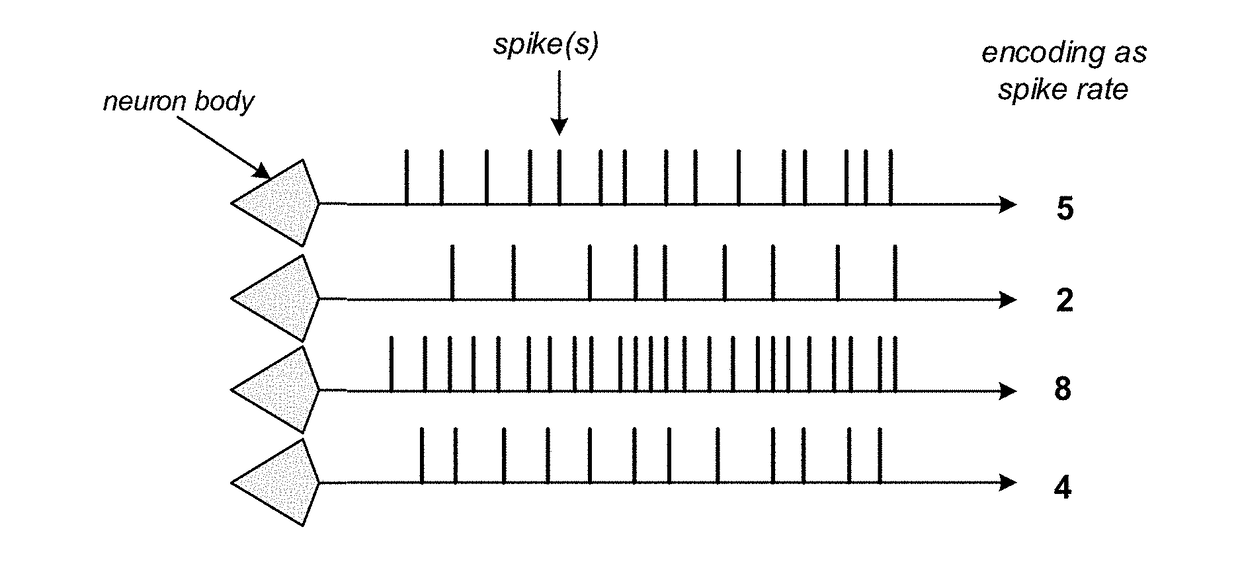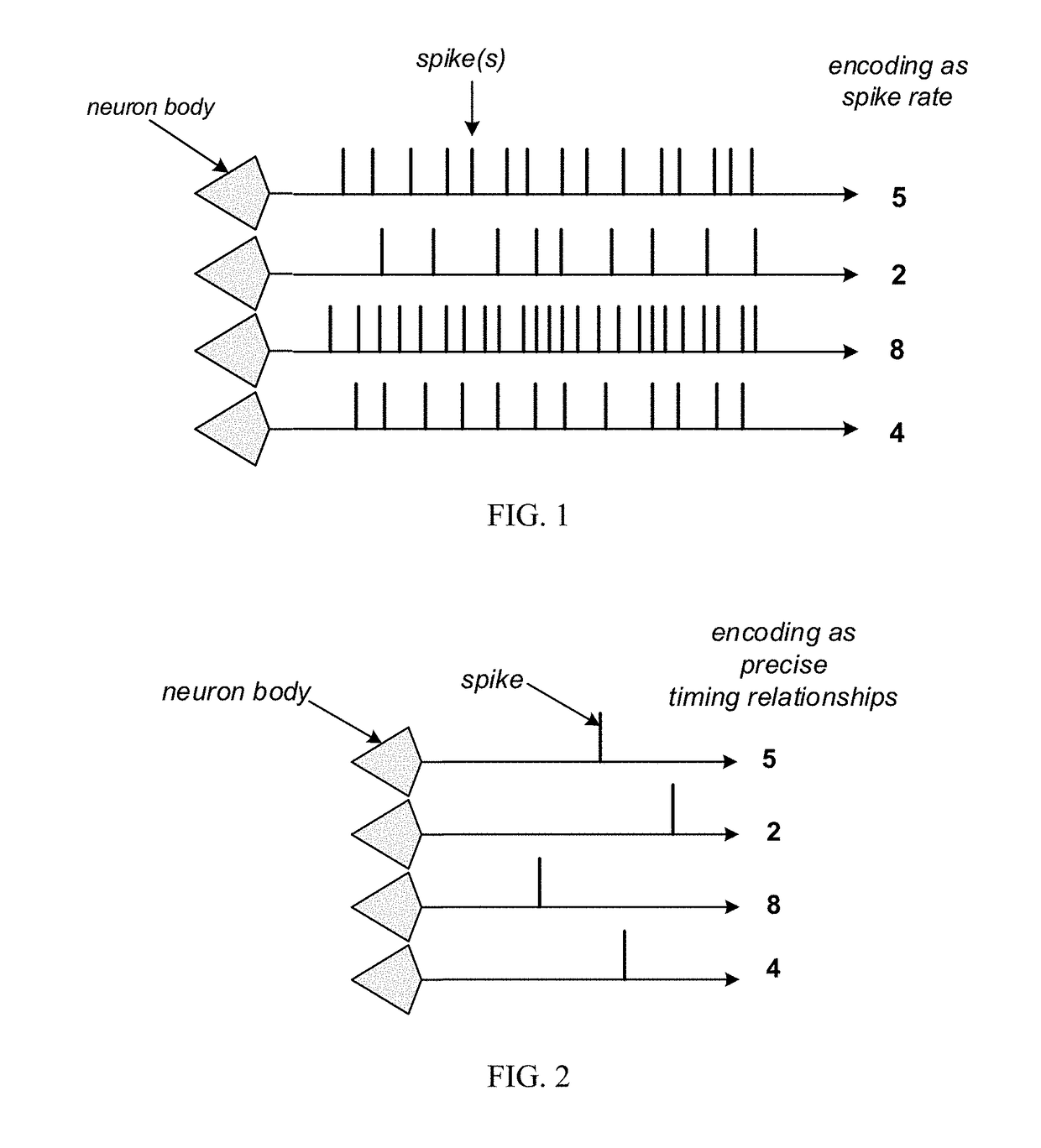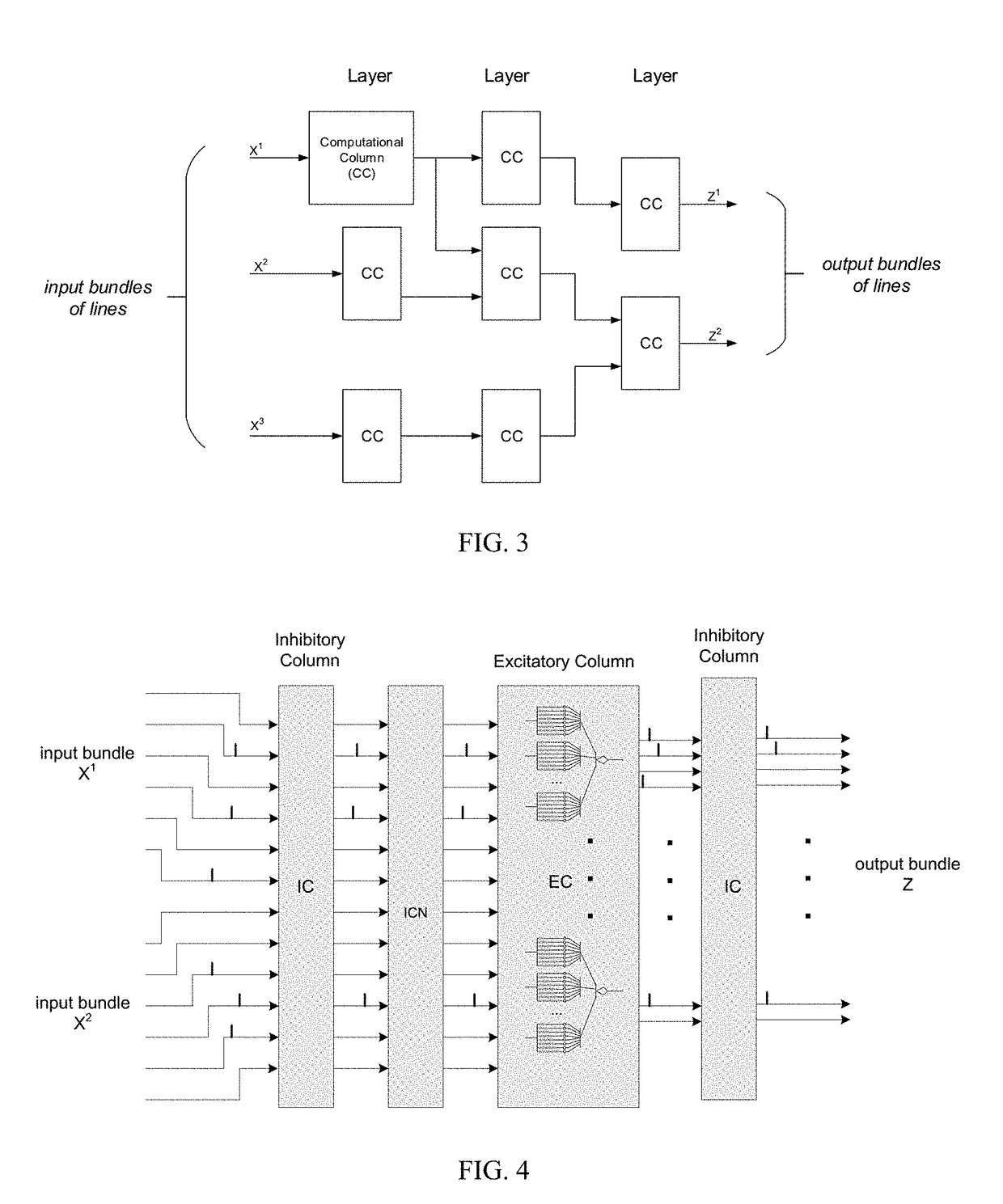Cognitive Neural Architecture and Associated Neural Network Implementations
a neural network and cognitive technology, applied in the field of neural network model and implementation, can solve the problem that prior art artificial neural network training processes are generally very time-consuming
- Summary
- Abstract
- Description
- Claims
- Application Information
AI Technical Summary
Benefits of technology
Problems solved by technology
Method used
Image
Examples
Embodiment Construction
[0060]This document describes a type of spiking neural network and supporting implementations based on models which employ neuron-like operation.
[0061]A spiking neural network contains model neurons that implement communication and computation based on timing relationships among multiple, concurrently occurring voltage spikes. The way time is modeled in the claimed invention, i.e. the time abstraction, provides each model neuron with its own temporal frame of reference for actual time. A voltage spike is modeled by specifying the actual time a spike occurs and the line on which the spike occurs. Actual time is measured in discrete time intervals, and the claimed spiking neural computing model maintains actual time as a critical part of a useful spiking neural network abstraction.
[0062]As is commonly accepted, if voltage spikes communicate information from one neuron to another, there are two main ways communication can be done. Many variations and hybrids have been proposed, but for...
PUM
 Login to View More
Login to View More Abstract
Description
Claims
Application Information
 Login to View More
Login to View More - R&D
- Intellectual Property
- Life Sciences
- Materials
- Tech Scout
- Unparalleled Data Quality
- Higher Quality Content
- 60% Fewer Hallucinations
Browse by: Latest US Patents, China's latest patents, Technical Efficacy Thesaurus, Application Domain, Technology Topic, Popular Technical Reports.
© 2025 PatSnap. All rights reserved.Legal|Privacy policy|Modern Slavery Act Transparency Statement|Sitemap|About US| Contact US: help@patsnap.com



